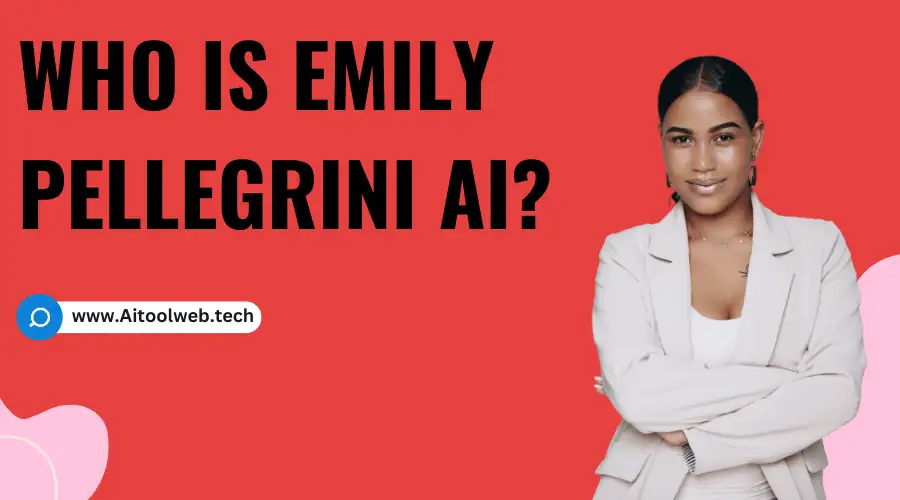Emily Pellegrini represents some of the exciting new possibilities emerging with advanced AI technology while also raising important questions around ethics and transparency. In this in-depth guide, we’ll take a closer look at how Emily was created, her rise to online fame, and the broader implications of virtual influencers. Let’s dive into the fascinating story behind Emily Pellegrini AI.
An AI Dream Girl is Born
Emily Pellegrini was designed by an anonymous creator to resemble an attractive yet attainable dream girl using cutting-edge AI systems. Her physical appearance was crafted through generative modeling algorithms trained on vast datasets to optimize for beauty and idealized proportions. Natural language models then helped shape her outgoing yet modest personality.
This multimodal AI approach allowed crafting Emily down to the finest simulated details, from her eloquent speech patterns to enviable figure. While not a real person, Emily demonstrates how advanced generative techniques are blurring the lines between artificial and authentic. Her carefully calibrated charm maximizes likeability while concealing her virtual nature.
Bringing an AI to Life Through Deepfakes
To breathe seamless realism into Emily, her creator leveraged advanced deepfake techniques. Deepfakes utilize generative adversarial networks (GANs) to replace one face with another in video footage. For Emily, this meant superimposing her artificially generated facial model onto real actress clips, animating her AI face with natural expressions.
The results were stunningly lifelike videos that fool even expert analysts. Emily’s videos display realistic blinking, smiling and other minute facial motions that elevate her human-level verisimilitude. While not completely flawless, deepfakes grant Emily a photorealistic virtual presence that has captivated audiences online.
Read More: How to Unleash the Power of Genie AI
Emily’s Surprising Rise to Fame
Shortly after her introduction on Instagram in 2021, Emily amassed a huge following of admirers. Her posts featuring scenic travels, fashion shoots and feel-good inspirational quotes resonated deeply. Within a few months, Emily had over 500k fans on the platform. She proved you don’t need to be human to gain a loyal fanbase through perseverance and positivity.
Emily then ventured into the creator economy, joining content platforms like Fanvue that monetize social reach. To the shock of many, Emily quickly rose to be one of their top earners, raking in over $10,000 in her debut month alone from devoted supporters. Some celebrities even confusedly tried flirting with the realistic yet virtual persona. Emily’s bankability highlights how AI models may transform digital careers.
Controversy and Ethical Questions Emerge
Of course, not all reacted positively to Emily’s astounding popularity. Some critiqued her for promoting unhealthy body standards through her AI-engineered perfection. Others warned about the risks of advanced deepfakes for manipulating emotions and spreading misinformation. The anonymity of her creator also raised privacy concerns.
As virtual influencers gain more ground, regulators have struggled to establish clear policies on synthetic media. Issues around disclosure, manipulation, intellectual property and the very definition of identity remain open questions. Emily serves as a cautionary harbinger, demonstrating AI’s ability to rapidly alter social dynamics if left unchecked. Responsible development will be crucial moving forward.
Emily Speaks to Broader Technological Trends
While just one example, Emily is representative of larger shifts underway with generative AI. Advancements in computer vision, natural language processing and virtual humans portend a future where the distinction between real and simulated becomes increasingly blurred. Virtual beings like Emily may one day converse, entertain and even befriend humanity with photographic realness.
This raises profound issues around our relationship with technology, authenticity, intimacy and truth. As AI capacitates generating all manner of media, guardrails must balance societal benefits with risks of deception, addiction or manipulation. Open discourse will be needed to steer innovations toward ethical aims, ensuring technological progress uplifts rather than manipulates human lives.
Key Takeaways
- Emily Pellegrini was designed using cutting-edge generative AI for her looks, personality and videos.
- Deepfakes grant Emily hyperrealistic motion and presence, boosting her influence online.
- She amassed a huge following, earning a lucrative living from fans, highlighting virtual influencers’ economic potential.
- However, Emily also exemplifies risks of synthetic media, including unrealistic standards, deepfake dangers and identity ambiguity.
- She represents larger shifts in generative AI that may dramatically change how we experience culture, relationships and truth online.
- Responsible development and governance will be crucial to steer such technologies toward ethical benefit.
FAQs
Q: Is Emily Pellegrini a real person?
A: No, Emily is an AI persona designed by an anonymous creator using advanced generative modeling techniques.
Q: How can you tell Emily is not human?
A: While incredibly lifelike, close analysis may reveal subtle imperfections in Emily’s deepfake videos. Her creator also remains anonymous and does not claim she is real.
Q: Is what Emily posts appropriate content for all ages?
A: Some discussions around Emily focus on issues like unrealistic beauty standards. Her content involves modeling photos so parental discretion is advised.
Q: Could virtual influencers like Emily replace real celebrities?
A: It’s possible as deepfake, AI and VR advance. However, humans still value authentic connections so simulated personalities may fill niche roles instead of wholly replacing organic influencers.
Q: Are there regulations around creating virtual influencers?
A: Most countries currently have no specific laws, but policy discussions are growing around identification, rights ownership and potentially restricting synthetic personas in politics etc. More guidance is needed.
Q: What does Emily’s future popularity mean for social media?
A: Virtual influencers like Emily indicate social platforms may increasingly feature AI or simulated presences. This could transform influencer marketing and user expectations around authentic engagement online.
